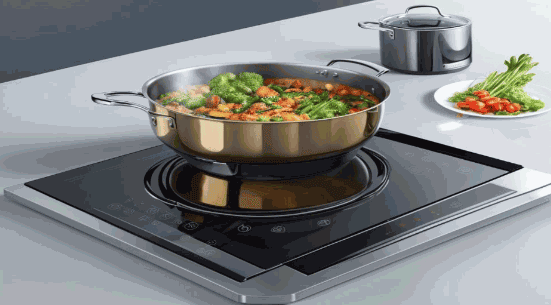
With a vast array of options available, determining the ideal type of stove can be a challenging decision. However, it is crucial to carefully consider various factors to make an informed choice. By focusing on important aspects such as efficiency, functionality, and safety, individuals can select the perfect stove that aligns with their cooking needs and preferences.
Keep reading to explore the key considerations when choosing a stove, ensuring you don't miss out on the best option for your kitchen.
A good stove is like a reliable partner in the kitchen, silent when needed, and hot as hell when required.
Table of Contents
A good stove is vital! It provides even heat for efficient cooking, and it also makes it safer. Plus, it saves energy and reduces bills. Moreover, modern stoves offer features like programmable timers and precise temperature control, making cooking more enjoyable.
When picking a stove, consider its size and capacity to meet your culinary needs. If you are cooking for a lot of people, opt for a larger stove with multiple burners. For a small kitchen or single user, go for a smaller one.
Also, consider the build quality of the stove. Investing in a high-quality one ensures it lasts longer. Plus, some come with warranties for extra assurance.
Early stoves date back to Ancient Greece and Rome. They used wood and coal as fuel. Then, during the Industrial Revolution in Europe, cast iron stoves changed cooking methods and improved efficiency.
Dig Deeper: 8 Easy steps to clean and maintain wood burning stoves
Gas Stoves, also known as natural gas stoves, are a popular choice among homeowners and chefs due to their efficient cooking capabilities and clean burning fuel. These stoves use a constant supply of natural gas, which is delivered through a pipeline, to generate heat for cooking.
Unlike electric stoves, gas stoves provide instant heat and precise temperature control, making them ideal for professional cooking applications. Furthermore, gas stoves are known for their even heat distribution, which ensures that food is cooked evenly and thoroughly. This makes them a preferred choice for baking and roasting.
Additionally, gas stoves are also preferred by many due to their lower operating costs compared to electric stoves. They are more energy efficient and can save users money on their monthly energy bills.
Overall, gas stoves offer a reliable and versatile cooking option for both residential and commercial kitchens.
Want to feel like a pro chef? Get a gas stove and let the flames dance under your cooking pot, while you pretend you're on a sizzling cooking show...minus the dramatic music and TV cameras, of course!
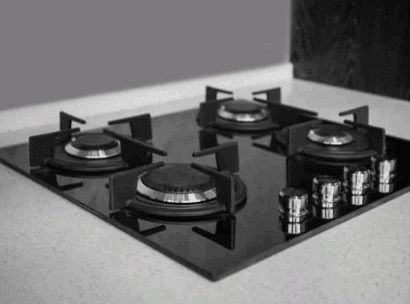
Gas stoves are a great addition to any kitchen! They provide instant heat, allowing for speedy cooking and control over the temperature. Plus, they're energy-efficient - you only use fuel when the flame is ignited! They also offer precise heat control, meaning better culinary results. And, if the power goes out, you can still use your gas stove to cook meals.
But there's more! Unlike electric stoves, gas stoves cool down fast when the flame is turned off. This reduces the risk of burns and provides extra safety.
So, why not upgrade to a gas stove? Faster cooking, lower energy bills, and enhanced culinary results are all there for you! Don't miss out - take action now and enjoy all that a gas stove has to offer!
Instant heat
Instant Heat:
Plus, you get precise control over the flame intensity. Adjust to the exact needs.
Did you know? The National Association of Home Builders reported that gas stoves remain popular due to their reliability and speedy heating.
Precise temperature control
Gas stoves boast precision temp control. This grants users the power to masterfully adjust heat. From simmering to boiling -cooking results are achieved with ease.
Components:
Plus, there's the ignition system. Electric ignition systems are a match-free, safe alternative.
Fun Fact: Gas stoves have been around since the 19th century! They've revolutionized cooking methods and shaped culinary traditions.
Cost-effective
Gas stoves are cost-effective since they use less fuel than electric ones. They provide instant heat, reducing cooking time and saving energy. Gas prices are more stable than electricity, offering long-term savings. Plus, these stoves have a longer lifespan, so less money is spent on replacing them. Modern gas stoves come with features like electronic ignition, which further cuts down operational costs. Also, they are competitively priced in the market.
Moreover, gas stoves offer precision temperature control, allowing for efficient cooking with minimal wastage. Natural gas is a dependable fuel source, ensuring a steady supply for cooking needs. In the 1800s, Bunsen burners introduced gas as a reliable source of heat, leading to the invention of modern gas stoves. These stoves continue to evolve, meeting demands for cost-effective and effective cooking solutions.
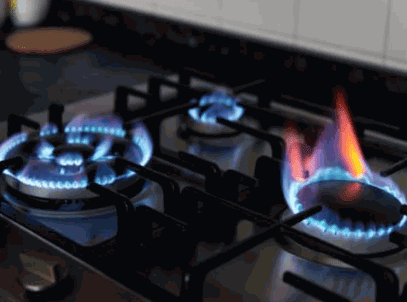
Gas stoves are favored for their efficiency and convenience. But, there are drawbacks.
Environmentally, burning gas releases greenhouse gases, resulting in air pollution and climate change.
Pro Tip: Ventilate the kitchen when using a gas stove. Check for gas leaks with soap and water. If bubbles form, get help from a pro.
Requires a gas connection
Gas stoves are a popular choice for households. To use one, you need a gas connection. Why? Let's look at a few reasons.
Plus, you don't need to keep refilling propane tanks or buying other fuel sources.
Did you know gas stoves have been used for cooking since the 19th century? The US Department of Energy states that practical and safe domestic versions were introduced in the late 1800s. This changed how people prepared their meals.
Potential safety risks
Gas stoves can bring potential safety risks. Let's look at the risks and how to stay safe while using gas stoves.
| Safety Risk | Description |
|---|---|
| Gas Leaks | Leaks in supply lines or connections |
| Fire Accidents | Unattended flames leading to fire incidents |
| Carbon Monoxide | Exposure to this harmful gas |
| Burns | Accidental contact with hot surfaces |
For these safety risks, make sure to install and maintain your gas stove properly. Inspect the gas supply lines and connections for any leaks. Keep a fire extinguisher nearby when operating a gas stove and never leave it unattended.
Don't forget about carbon monoxide poisoning. Make sure your kitchen has proper ventilation to prevent carbon monoxide buildup.
Lastly, be careful with hot cookware and surfaces. Wear oven mitts or pot holders to prevent burns.
Pro Tip: Install carbon monoxide detectors in your kitchen area for early detection of high levels of carbon monoxide.
Stay aware and prioritize safety when using gas stoves. Enjoy cooking with convenience and safety!
Higher maintenance
Gas stoves need constant upkeep to be efficient and safe. This involves cleaning, inspection, and maintenance. Clean the burners, knobs, and grates often to get rid of grease and food residue. Check gas lines, valves, regulators, and connectors for leaks or damage. Clear out any blockages in the burners. Make sure the oven door fits snugly. Ventilation is key - check and clean the range hood or exhaust fan.
Ignoring maintenance can lead to safety risks and decreased effectiveness. Get professional servicing once a year to find hidden problems and have them fixed by qualified technicians.
Gas stoves can be dangerous if not managed properly. The CPSC says that unattended cooking on gas stoves is a major cause of house fires in the US.
Look after your stove - it'll last longer and help keep your home secure.
Electric stoves, also known as electric cooktops, are a popular choice among homeowners for their efficiency and safety. They use electricity to generate heat, allowing for precise temperature control during cooking. Let's explore the features and benefits of electric stoves in detail.
| Feature | Description |
|---|---|
| Energy Source | Electric stoves derive power from an electrical supply. |
| Heating Speed | Electric stoves provide fast and even heating, saving cooking time. |
| Temperature | Users can adjust and maintain precise temperatures for cooking tasks. |
| Safety | Electric stoves eliminate the risk of gas leaks and open flames. |
| Easy Cleaning | Flat, smooth surfaces make cleaning electric stoves hassle-free. |
| Durability | With proper maintenance, electric stoves can last for many years. |
Electric stoves also offer some unique details that set them apart. They produce less waste heat, making the kitchen more comfortable during cooking. Additionally, they are easier to install and operate than gas stoves, making them a convenient choice for many households.
Pro Tip: To maximize energy efficiency, consider using cookware with flat bottoms that match the size of the heating elements on your electric stove.
Electric stoves are a reliable and efficient option for those looking for precise temperature control, ease of use, and safety in their kitchen. Whether you're a professional chef or a home cook, electric stoves provide the functionality and convenience you need for your culinary endeavors.
Need the perfect excuse for burnt food? Get an electric stove - it's shockingly effective at turning your dinner into charcoal.
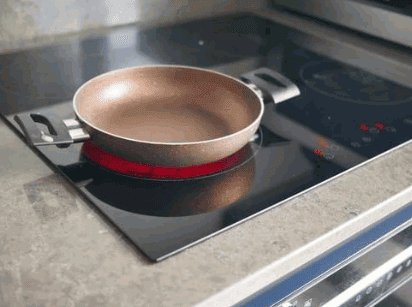
Electric stoves are a popular choice for many households, due to a number of advantages. They can be plugged into an electrical outlet, eliminating the need for gas lines or propane tanks. Plus, they provide precise temperature control, for more accurate cooking. Additionally, electric stoves heat up quickly - reducing cooking time and energy consumption.
Furthermore, electric stoves are safer than gas stoves, with no risk of gas leaks or open flames. They also offer even heat distribution, leading to better cooking results. Cleaning and maintenance are generally easier too.
Uniquely, electric stoves come with convection cooking. This circulates hot air within the oven, ensuring food cooks evenly and efficiently. Also, some electric stoves use induction technology, which uses electromagnetic fields to directly heat cookware. This provides faster heating times and improved energy efficiency.
In conclusion, electric stoves offer a number of benefits, such as easy installation, precise temperature control, quick heating time, improved safety features, convection cooking, and potential energy savings. It's no wonder why so many households choose electric stoves!
Easy to use and clean
Electric stoves are a must-have for any cooking lover. They offer a hassle-free way to cook, saving time and effort.
Plus, they come with these great features:
Plus, they have more advanced features too! For instance, some models have built-in timers and auto shut-off functions. Not to mention, their advanced heating tech ensures even heat distribution for perfect results.
Did you know electric stoves have been around since the late 19th century? Even then, they were designed with simplicity and convenience in mind. They've come a long way, but still haven't lost that same charm!
Even heat distribution
Electric stoves are famous for distributing heat evenly. This means your food is cooked properly, creating yummy dishes every time. This even heat is achieved with heating elements and special burner designs.
Let's look at the heat distribution of electric stoves:
The heating element in electric stoves is important for even heat distribution. It is placed under the cooking surface, transferring heat to all areas of the stove. This eliminates hot or cold spots.
Special burners are also used to spread heat evenly across cookware. This allows for consistent heat, no matter what you are boiling or simmering.
Electric stoves also have advanced temperature control. This lets you set the temperature and keep it there throughout cooking. This gives you the results you anticipated.
Pro Tip: To get the most even heat, make sure your cookware is the same size as the burner or heating element. Using the wrong size cookware can affect heat transfer from the stove to your food.
Safer than gas stoves
Electric stoves are safer than traditional gas ones. They come with safety features that provide users with peace of mind.
Still, it's important to use electric stoves responsibly. Cleaning and maintaining them regularly will ensure they work as intended.
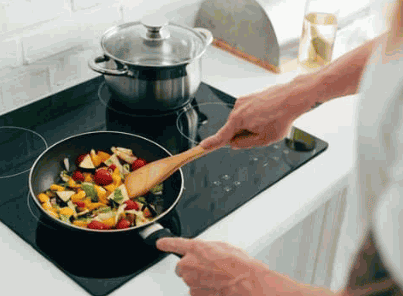
Electric stoves can have drawbacks. Here are some to keep in mind:
Plus, electric stoves can be heavy and hard to move due to complex wiring. Consider all of this when deciding if an electric stove is right for you.
Pro Tip: To save energy, match your cookware size to the burner size and use flat-bottomed pans for better heat transfer.
Slower heat-up time
Electric stoves take longer to reach the desired temperature compared to gas stoves. Let's investigate why. Wattage, cookware, insulation, and material all influence the heat-up time. For instance, higher-wattage electric stoves heat up faster, and thick-based cookware also promotes efficient heat transfer. Proper insulation helps retain and distribute heat evenly. The material of the heating element can also affect the speed of heating - ceramic elements typically heat up quicker than coil-based elements.
But, slower heat-up time has its advantages too. It gives more control over cooking temperatures and reduces the risk of burning or overcooking dishes. A home chef experienced this first-hand. Initially frustrated by the slow heat-up time, they eventually realized it offered precision and better results.
Ultimately, choosing between electric and gas stoves is a matter of personal preference and cooking style. Electric stoves may have slower heat-up time, but they offer enhanced control and fewer culinary errors.
Less precise temperature control
Electric stoves can be tricky when it comes to temperature control. This has some consequences:
But, modern models have smart tech that helps solve these problems. They offer more accurate and customizable settings.
Higher electricity consumption
Electric stoves are described as having high electricity consumption. Let's take a look at the facts.
Check out this table:
| Stove Model | Power Consumption (kWh) |
|---|---|
| Model A | 2.5 |
| Model B | 4.2 |
| Model C | 3.8 |
Based on the table, power consumption varies from model to model. Model B consumes the most at 4.2 kWh, while Model A has the least at 2.5 kWh.
Also, remember that some factors affect electricity consumption. Using higher heat settings or cooking for longer periods will increase power usage.
Pro Tip: To lower electricity consumption when using electric stoves, use lower heat settings and shorten cooking durations.
Induction Cooktops:
An induction cooktop is a type of stove that uses electromagnetic fields to heat the cookware directly. This technology offers precise temperature control and faster cooking times compared to traditional gas or electric cooktops.
Table:
| Feature | Description |
|---|---|
| Heat Source | Induction |
| Energy Efficiency | High |
| Temperature Control | Precise |
| Cooking Speed | Fast |
| Safety | Flameless cooking, cool surface |
| Cleaning | Easy to clean, smooth surface |
Induction cooktops are known for their energy efficiency and precise temperature control. Unlike gas or electric cooktops, induction cooktops heat the cookware directly, resulting in faster cooking times. They are also safer to use as the surface remains cool to the touch and there is no open flame. Additionally, the smooth surface of induction cooktops makes them easy to clean.
Pro Tip: When using induction cooktops, make sure to use cookware with a magnetic base for optimal performance. Induction cooktops: the only way to cook where heat is generated faster than finding a matching pair of socks in the dryer.
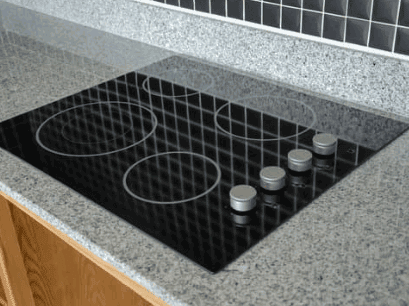
Induction cooktops are becoming more and more prevalent in modern kitchens. The reason? They make use of electromagnetic fields to heat up the cookware directly, leading to a faster and more precise cooking experience.
Here are some of their advantages:
Plus they come with features like auto shut-off and child lock. They also come in various sizes and styles to fit different kitchen layouts.
Fast and efficient cooking
Induction cooktops are the go-to choice for busy professionals and home cooks. They heat up quickly, plus offer precise temperature control. No more hot spots or undercooked portions! Plus, these appliances are energy efficient. They only heat the cookware, not the surrounding area.
Unique features of induction cooktops include safety measures like auto shut-off timers and cool-to-touch surfaces.
Precise temperature control
Induction cooktops stand out from traditional stoves due to their precise temperature control. This allows cooks to regulate heat with accuracy and efficiency. Let's take a look at the temperature settings on induction cooktops:
These settings allow chefs to effortlessly adjust the level of heat. Plus, induction cooktops respond quickly to changes in temperature. This means precise cooking techniques like braising or searing are possible, where timing is key.
Induction cooktops have a long history, dating back to the early 1900s. Initially used only in industrial settings, advances in technology have made them more accessible for home use. Professional chefs and home cooks alike now appreciate induction cooktops for their accurate and consistent heat control.
Easy to clean
Induction cooktops are a breeze to clean, due to their sleek and smooth surfaces. Here are the advantages of having one:
Plus, some induction cooktops offer a removable control panel for easy cleaning. Consumer Reports confirms that these are the easiest stovetops to maintain and keep clean.
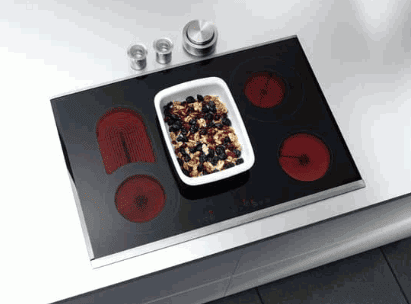
Induction cooktops have some downsides. Let's look at them!
But there are solutions!
Requires compatible cookware
For an induction cooktop to work right, you need to use cookware that can conduct magnetic fields. With the right cookware, you'll get better heating and cooking results. To find out which cookware is compatible with induction cooktops, refer to the table below. It'll help you make wise choices when selecting cookware.
Also, the base of the pots and pans should be flat and even. Bumpy or dented ones may disrupt heat distribution and cause inefficient cooking.
So, when using an induction cooktop, get compatible cookware that can conduct magnetic fields. This will guarantee optimal performance and enjoyable cooking each time.
Higher initial cost
Induction cooktops can have a higher upfront cost - but their long-term advantages make them worth the investment. The table below shows the initial costs of different models:
| Induction Cooktop Model | Initial Cost (USD) |
|---|---|
| Model A | $500 |
| Model B | $600 |
| Model C | $700 |
Induction cooktops offer rapid heating, temperature control, and a modern design. Plus, they consume less energy and are easy to clean. These cooking solutions have been around since the 1970s, and technology has made them more accessible.
To conclude, the higher cost of induction cooktops is balanced out by their efficiency, speed, and modern look. That's why more and more households are opting for these innovative appliances.
Limited heat source for certain cooking techniques
Induction cooktops offer an efficient way to cook food but have certain limitations that restrict certain cooking techniques. Below is a table showing the limitations of induction cooktops:
| Cooking Technique | Limitations |
|---|---|
| Grilling | Cannot provide direct heat |
| Roasting | Difficult to achieve even heat distribution |
| Deep frying | Limited temperature range for frying |
| Wok cooking | Curved wok bottoms may not contact the surface |
Induction cooktops also vary in power output and size which can further limit their suitability. Despite these limitations, induction cooktops have many advantages. They heat up quickly, have precise temperature control, and are energy-efficient. Plus, they provide consistent heat distribution across the cooking surface which results in evenly cooked meals.
If you want to get the most out of your induction cooktop, explore recipes and techniques specifically designed for this type of cooking. There are plenty of resources available online and in cookbooks to help you unlock its full potential. Upgrade your kitchen with an induction cooktop today and discover the joy of efficient and precise cooking!
The best stove for your needs depends on various factors such as cooking style, fuel preference, and kitchen space. Gas stoves offer precise temperature control, while electric stoves are easy to clean. Induction stoves are energy-efficient and safe. Each option has its advantages, so it's important to consider your preferences and requirements before making a decision. Additionally, consulting with a professional can provide valuable insights tailored to your specific needs.
Electric, gas, or wood-burning stoves, have their pros and cons - just like dating: Electric is safe but lacks passion, gas is efficient but can be explosive, and wood burning is romantic but demands constant attention.